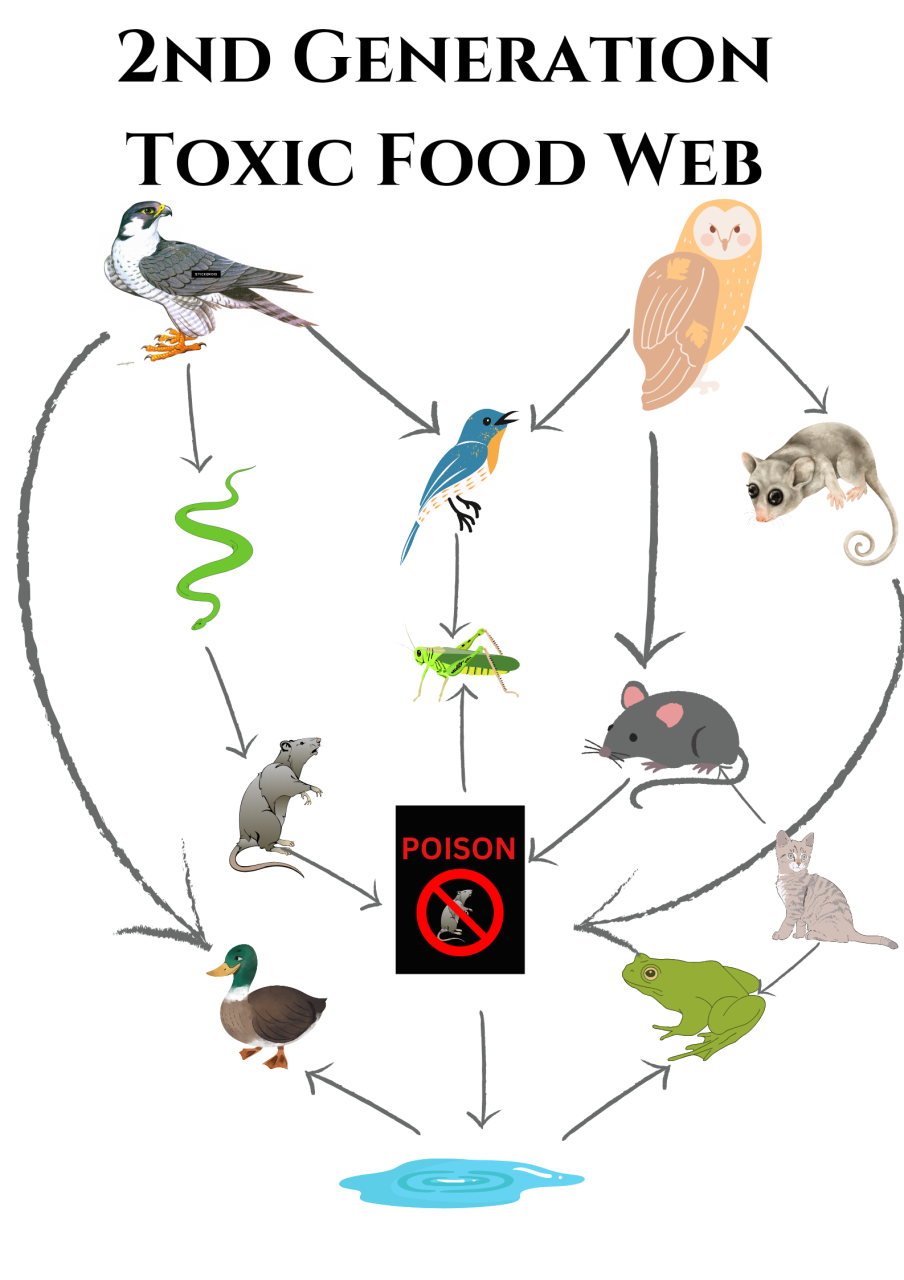Birds of Prey
Birds of prey are predatory birds, known to actively hunt for their prey. Distinguishing characteristics of birds of prey include a hook-tipped bill for ripping off meat and strong feet with long sharp talons designed to grasp and pierce their prey. They also have sharp eyesight and hearing.
Some birds of prey such as owls, frogmouths and nightjars, are nocturnal birds which means they are active at nighttime. Eagles, hawks, kestrels, ospreys, kites and falcons are diurnal, meaning that they are active during the daytime.
Birds of prey that are commonly seen in Geraldton and the Midwest region include:
- Barn Owl
- Boobook Owl
- Osprey
- White-bellied Sea Eagle
- Wedge-tailed Eagle
- Little Eagle
|
- Black-shouldered Kite
- Whistling Kite
- Collared Sparrowhawk
- Brown Goshawk
- Swamp Harrier
- Spotted Harrier
|
- Nankeen Kestrel
- Brown Falcon
- Peregrine Falcon
- Australian Hobby
- Tawny Frogmouth
- Owlet-Nightjar
|
Photos L-R: Barn Owl, Whistling Kite, Boobook Owl and an Australian Hobby. Photos by Heather Beswick and Janelle Ende
Rodenticide poisoning and wildlife
Birds of prey such as owls predate on small mammals, such as mice and rats. Unfortunately birds of prey can become very sick or die if they eat a rodent that has consumed Second Generation Anticoagulant Rodenticides. Similarly, many native animals such as possums and bobtails can directly ingest rodent baits resulting in sickness or death.
Second Generation Anticoagulant Rodenticides (SGARs)
Anticoagulant poisons work by preventing blood clots from forming in rodents which causes internal bleeding which then leads to death. SGAR poisons take a single feeding for the dose to become lethal, however rodents don’t feel the effects straight away. Secondary poisoning can occur in non-target animals who eat rodents because SGARs are slower to break down in a rodent’s system. Non-target animals can also be poisoned if they directly eat this type of bait. SGARs that are currently registered in Australia by the Australian Pesticides and Veterinary Medicines Authority include brodifacoum, bromadiolone, difethialone, difenacoum and flocoumafen.

First Generation Anticoagulant Rodenticide (FGARs)
Rodents or rabbits must consume multiple doses of FGARs over several days straight for the poison to become lethal. FGARs also break down in the rodent’s system much quicker than Second generation poisons. Therefore, there is less chance of secondary poisoning in non-target animals when using FGARs. FGARs that are currently registered in Australia by the Australian Pesticides and Veterinary Medicines Authority include warfarin, coumatetralyl and diphacinone. Poisoning can be treated by a Vitamin K antidote from Veterinarians.
For more information on the different rodenticides, please visit the Rodenticides at Australian Pesticides and Veterinary Medicines Authority Government website.
Photos L-R: Nankeen Kestrel, Black-shoulder Kite, Brown Goshawk and Tawny Frogmouth. Photos by Heather Beswick
What you can do to help our native wildlife
- Avoid buying and using Second Generation Anticoagulant Rodenticides.
- If bait is required to control rodents on your property, use First Generation Anticoagulant Rodenticides. Make sure to keep out of reach of children and pets.
- Spread the word to your family and friends about the impacts of Second Generation rodenticides on our native wildlife.
- Remove and dispose of dead rodents immediately to prevent the risk of secondary poisoning.
- Use humane rodent traps as an alternative.
Tips to reduce rodents at your property:
- Block off or seal any entry holes, gaps or cracks inside or outside your home that rodents can crawl into
- Practice good sanitation by cleaning up food crumbs or food leftovers
- Seal your food in storage containers in the pantry
- Keep an eye on your pet’s food bowl
- Keep your pet, chook or livestock feed in sealed containers with a brick on top of the lid
- Trim back branches that may be brushing against your house as rodents can use these to crawl up
- Remove fallen fruit from your fruit trees
- Avoid keeping woodpiles, mulch piles, or leaf litter piles near your home as rodents can use these as places to nest
Injured wildlife
If you come across an injured bird of prey, please contact Janelle from local Just Raptors 0429 028 711, justraptors2@bigpond.com or visit them on Facebook here
Alternatively, contact Wildcare Helpline on 08 9474 9055 or visit their website here to find out more
What is the City doing?
The City of Greater Geraldton has recently become an ‘Owl Friendly’ Council. More here
Check out our Owl Friendly City brochure

Barn Owl. Photo by Steve Pidgeon
Further Information
Birdlife Midwest-Geraldton is a regional branch of BirdLife WA. Members enjoy bird watching excursions and are active in various citizen science projects as well as community education throughout Midwest Australia. To find out more, or to get involved visit their Facebook page or email birdlifemidwest@gmail.com
For advice on rodent control check out Owl Friendly Margaret River and this helpful BirdLife pamphlet.
Support education and research on the effects of Second-Generation rodenticides on our native wildlife by making a donation to the Owl Friendly Margaret River Region volunteer Rodenticide Action Group here